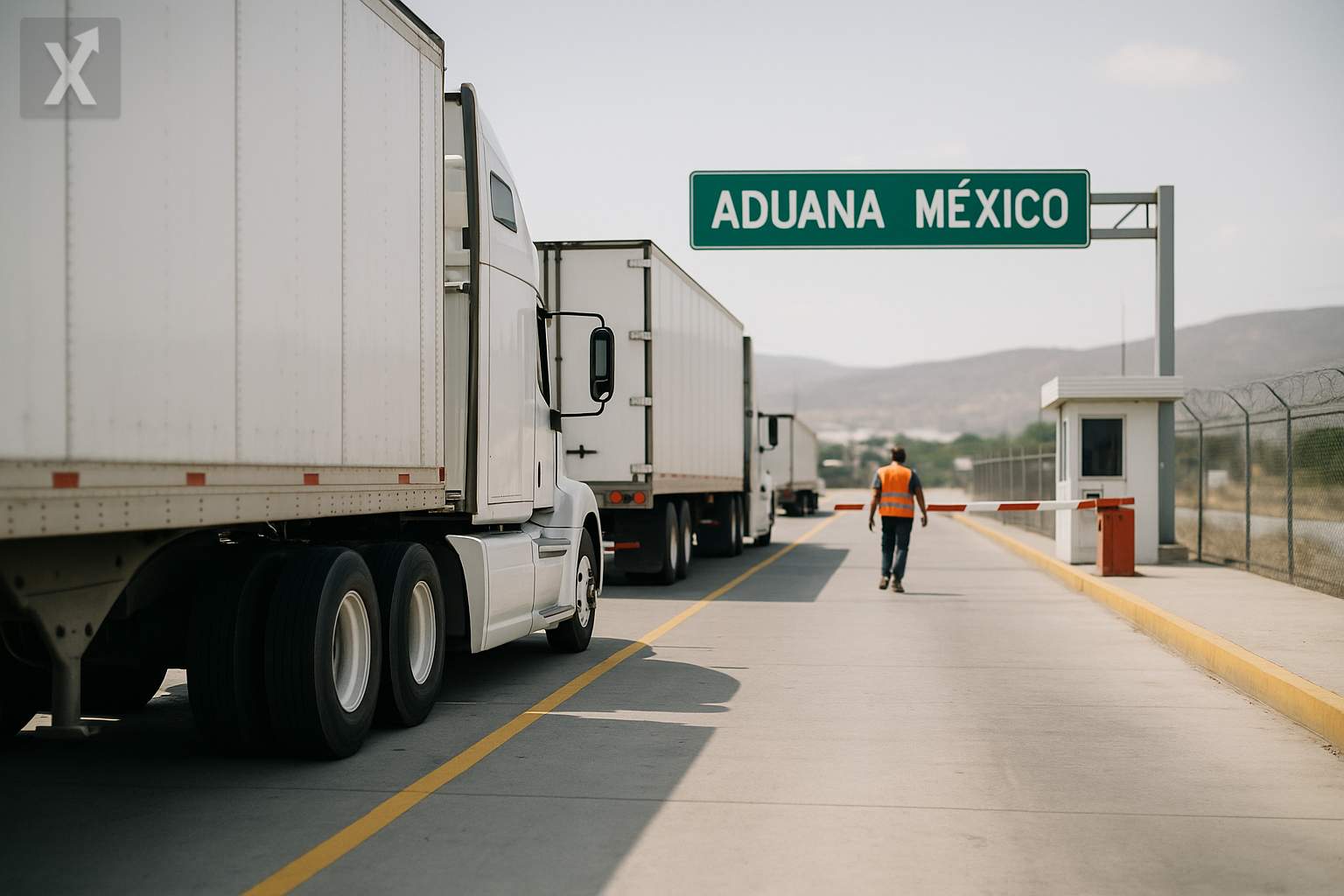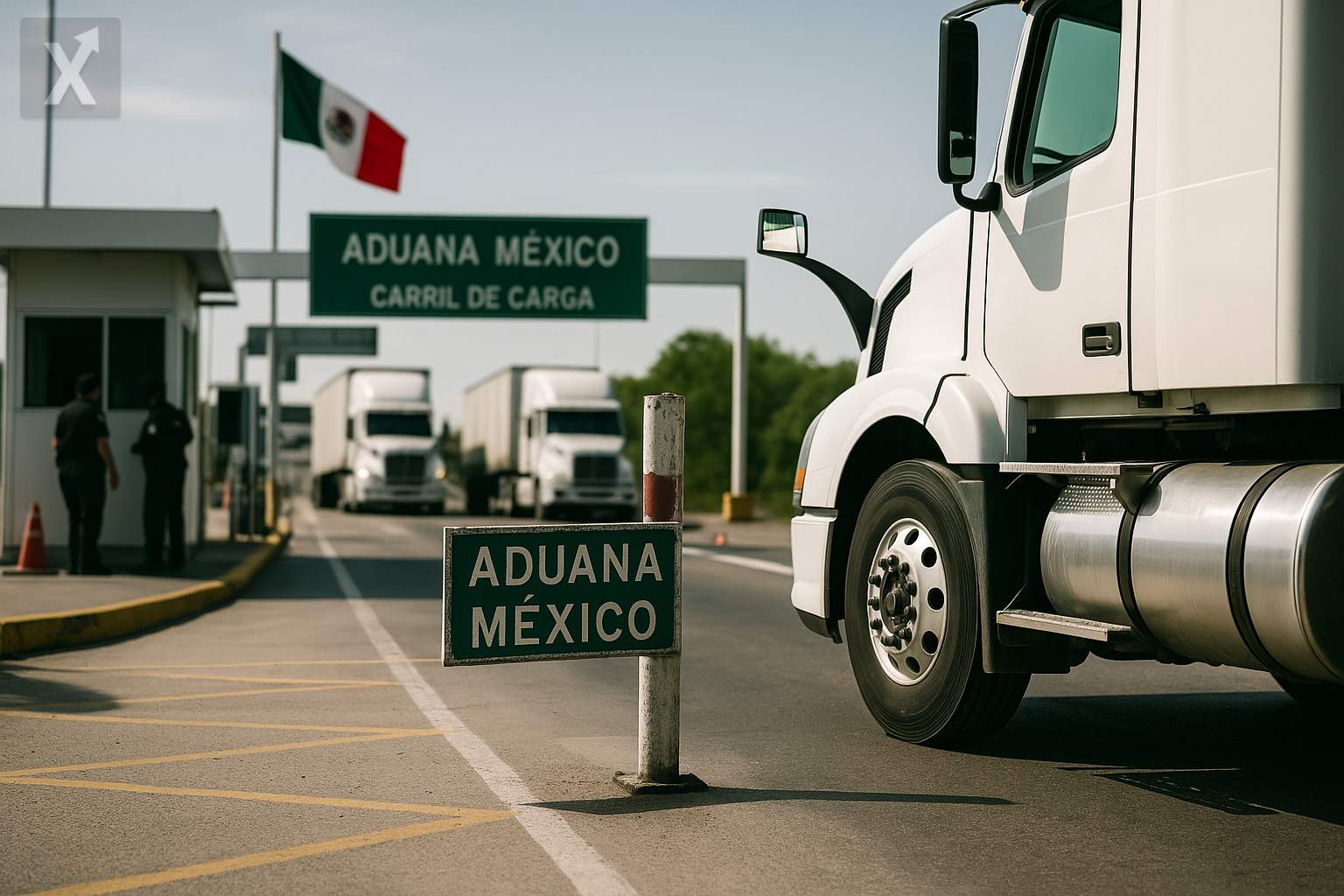USMCA at Two Speeds: The Automotive and Metals Sectors Pick Up the Pace While Agriculture and Chemicals Cement Their Lead

Mexico’s export performance under the USMCA is advancing at different speeds. According to recent estimates, national average compliance with the agreement’s rules reached 77% in June 2025—a substantial month-over-month improvement, but with clear lags in strategic sectors. Exports of miscellaneous products only met compliance at 24%, while metal-related industries—aluminum, steel, and copper—hovered around 52%; oil and gas at 57%; and the automotive industry at 68%. These segments were more exposed to U.S. tariffs, revealing a vulnerable flank in supply chains critical to Mexican manufacturing.
The pressure is centered on the automotive sector and its supply chain. Between January and May, auto parts production totaled $48.445 billion, down 8.6% year-over-year, according to the National Auto Parts Industry (INA), which links the decline to higher U.S. tariffs and slower vehicle sales in that market. Increasing costs for inputs like steel and aluminum—with tariffs as high as 25%—have eroded margins and competitiveness; INA estimates losses close to $3 billion due to this effect. The sector anticipates closing 2025 with a contraction of nearly 9% versus 2024, reflecting the fragility of North America’s most integrated export link.
In contrast, several industries have leveraged the USMCA framework to strengthen their position. Agriculture reached 99% compliance; plastics and rubber, 93%; food products, 92%; and chemicals, 91%. Even textiles and leather—historically exposed to trade disputes—reached 89%. More than a mere bureaucratic process, traceability and origin certification have become levers of competitiveness: those able to certify regional content and processes aligned with USMCA not only avoid tariffs but also gain order stability and lead times in a supply chain landscape reshaped by nearshoring.
The leap in Mexico’s compliance from May to June—a jump of 32 percentage points—enabled seven out of ten products to enter the U.S. without the 25% general tariff applied to noncompliant goods. Projections suggest that the country could close the year at 83% compliance, up from earlier estimates of 63%. As a result, the effective tariff rate Mexico faces drops to 5.2%—well below the burden carried by Asian competitors; for example, China faces a rate near 41.4% under the current regime of trade penalties.
Canada has also ramped up its adaptation: it went from 56% to 81% compliance in a single month and could reach 89%, thus avoiding the 35% tariff on goods outside the agreement. With effective rates around 5.9% for Canada and 5.2% for Mexico, North America signals integration in a global trade environment increasingly fragmented by tariffs, export controls, and geopolitical tensions.
For Mexico, the challenge is not just customs or paperwork. As more production is relocated to the country, electrical and transportation infrastructure, gas availability, and regulatory certainty become crucial to sustain regional content and scale up suppliers. The USMCA agenda—which includes rapid dispute resolution on labor and environmental commitments, as well as a scheduled review in 2026—adds further incentive to accelerate investment in energy quality, border logistics, and digitalization of certificates of origin. Without these elements, compliance may fall short of the nearshoring potential.
The implications are direct for costs, prices, and investment decisions. In automotive and metals, substituting imported inputs with regional content requires capital for stamping, casting, heat treatments, and battery supply chains. For SME suppliers, professionalizing traceability, laboratory testing, and standards management requires financing and technical assistance. If unaddressed, higher costs passed on to final prices could put upward pressure on inflation; for this reason, the central bank has maintained a cautious stance, monitoring underlying inflation and exchange-rate volatility in response to tariff and fiscal news.
Looking ahead, Mexico’s ability to consolidate and maintain compliance near 83% will be a resilience factor against U.S. economic cycles and changes in trade policy. The road map involves deepening North American content, strengthening the rule of law, and ensuring reliable, competitive energy. The nearshoring window of opportunity is not indefinite: faster permitting, expansion of industrial parks, and technical talent development could make the difference between capturing long-term investment or ceding it to other geographies.
In summary, Mexico has gained breathing room with rapid progress on USMCA compliance, but the “bottleneck” in autos and metals demands deeper adjustments. If regulatory, infrastructure, and local supplier improvements are consolidated, the country can cushion tariff shocks and anchor its manufacturing competitiveness in the region. The key will be to translate customs compliance into lasting productive capacities.






